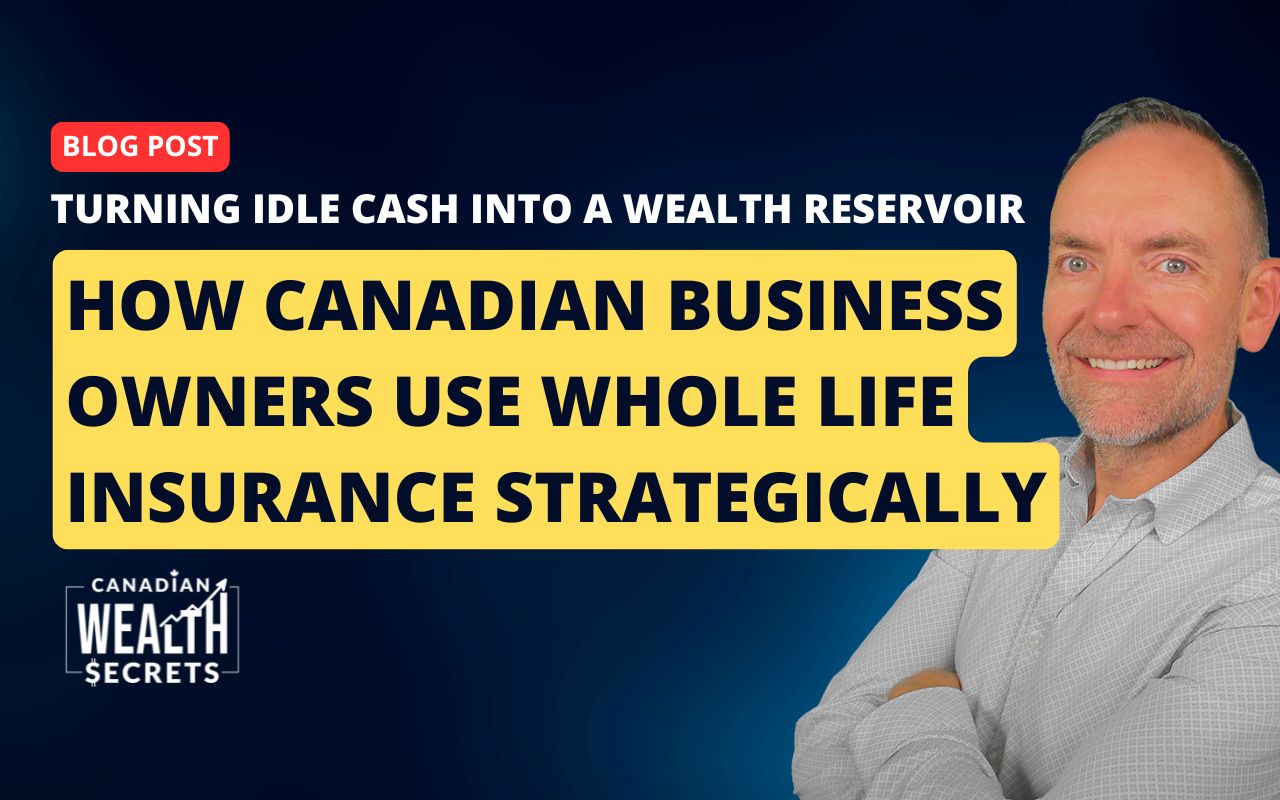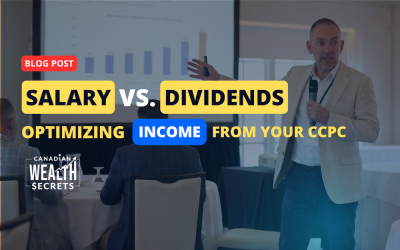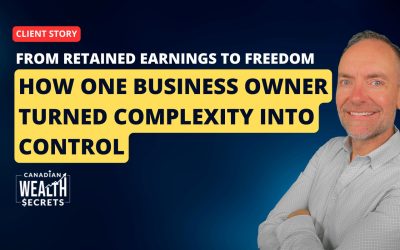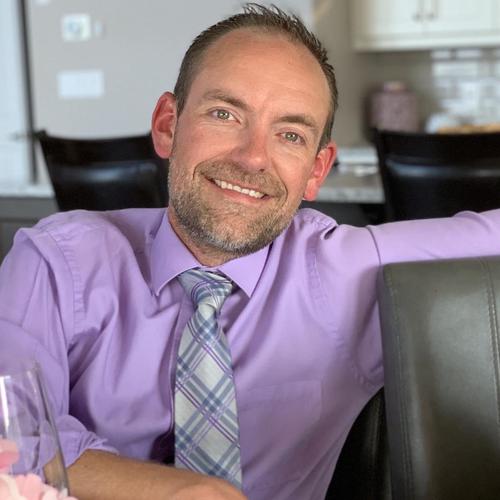Many business owners and high-income earners struggle with the same challenge: how to keep money liquid without letting it sit idle and erode to taxes and inflation.
Let’s look at Chris’ story.
Chris’ Challenge: Idle Cash and Missed Opportunities
Chris, a 39-year-old incorporated business owner, had done almost everything “by the book.”
- His corporation had accumulated over $500,000 in retained earnings.
- He contributed to his RRSP and even had an employee stock purchase plan.
- His mortgage was on track to be paid down within 10 years.
But he felt stuck.
Chris confessed: “I feel like my corporate cash is being held hostage. If I invest it, I trigger passive income tax. If I keep it liquid, inflation just eats away at it. And when the right investment comes along—like the rental property I was eyeing last year—I never seem ready to move fast enough.”
That’s when we introduced him to the idea of using a high early cash value whole life policy as a corporate wealth reservoir.
Common Questions Chris Asked (and Likely You Too)
1. “Isn’t life insurance just for protection?”
Like many business owners, Chris thought life insurance was only useful if he passed away.
But here’s the difference: traditional whole life policies, like the 20-pay plan he bought in his 20s, offered almost no liquidity—after 7 years of paying $1,200 annually, he had only $2,500 in cash value.
That experience left him skeptical.
A corporate-owned, high early cash value whole life policy works differently. From day one, the majority of premiums build a liquid, growing pool of capital. The insurance benefit is still there, but the real draw is the living benefit—a tax-sheltered reservoir he can leverage while alive. This is a carefully structured whole life policy — not just your run of the mill policy.
2. “What makes this strategy tax efficient?”
Chris’ frustration was clear: “Every time I make money inside my corporation, I feel like CRA takes a second bite when I try to invest it.”
That’s because corporate passive investment income can be taxed over 50% in Ontario.
High Cash Value Whole life policies change that. Growth inside the policy is tax-sheltered, meaning Chris’ $500,000 can compound without creating passive income tax drag.
Even better, when Chris eventually passes away, the death benefit flows through the Capital Dividend Account (CDA), allowing shareholders (or heirs) to withdraw funds tax-free. That was a lightbulb moment for him: “So this isn’t just about me—it’s about my kids starting ahead instead of cleaning up a tax mess.” — That’s the cherry on top!
3. “Can I still access the money if I need it?”
Liquidity was Chris’ biggest worry. He remembered missing out on a second property because he didn’t want to liquidate investments and trigger tax.
With whole life, the cash value can be collateralized with a bank. That means when the next property opportunity comes along, Chris can borrow against his policy (often at prime or better rates) while his reservoir keeps compounding untouched.
He said: “It’s like finally having my emergency fund and investment war chest in the same place—without the tax hit.”
4. “How is this better than just keeping a corporate portfolio?”
Chris compared the idea to keeping money in corporate ETFs or GICs.
Here’s the problem he faced:
- ETFs → Growth triggers annual taxable dividends.
- GICs → “Safe,” but fully taxable interest, and barely kept up with inflation.
- Whole Life → Growth is tax-sheltered, accessible, and creates permanent estate benefits.
For him, it wasn’t about replacing investments. It was about creating a foundation where cash could sit productively until the right opportunities appeared.
5. “What happens when I pass away?”
This was the turning point.
Chris’ concern wasn’t just for himself, but for his wife and two young kids. He worried: “I’ve built a good business and savings, but is the government going to take half when I’m gone?”
With the whole life strategy:
- The death benefit flows into the CDA.
- His family can withdraw the proceeds tax-free.
- The corporation can either be wound down smoothly or transitioned to his heirs.
Chris summed it up: “So instead of leaving a tax liability, I leave a springboard.”
Why High-Income Earners Love This Tool
Chris’ story isn’t unique. We’ve heard variations of it from dentists, consultants, real estate investors, and business owners across Canada:
- Too much idle corporate cash that feels like dead weight.
- Missed opportunities because liquidity meant paying a big tax bill.
- Fear of CRA clawing back wealth at retirement or death.
The corporate-owned whole life reservoir addresses all three in one move:
✅ Liquidity through collateralized loans.
✅ Tax-sheltered growth.
✅ A CDA-driven estate strategy.
Here are three common client profiles that highlight how this strategy applies across industries:
- The Dentist with $300k Retained Earnings
A professional corporation where excess cash sits idle. Instead of parking it in GICs, she uses a whole life policy to create a tax-sheltered liquidity reserve for future practice expansion or equipment upgrades. - The Consultant Eyeing Real Estate
A management consultant with irregular income doesn’t want to tie up retained earnings in long-term investments. By funding whole life, he builds liquid, leverageable cash value he can tap into for a real estate down payment without triggering tax. - The Retiring Owner Planning His Exit
A 62-year-old owner plans to sell his company within 5 years. Whole life ensures part of his retained earnings grow tax-sheltered during the transition. At death, proceeds flow through the CDA, allowing heirs to access millions tax-free instead of leaving a massive bill to CRA.
Key Takeaway
For business owners like Chris, wealth planning isn’t just about growth—it’s about control, efficiency, and legacy.
A properly structured high early cash value whole life policy turns your corporation’s idle cash into a living financial reservoir—ready for opportunities today, tax-sheltered growth tomorrow, and a tax-free legacy in the future.
If you’re like Chris — sitting on retained earnings, frustrated with taxes, and unsure how to balance liquidity with growth — whole life insurance may be the tool you’re missing.
👉 Take our Financial Health Assessment to see whether building a Corporate Wealth Reservoir fits your next wealth move.
Disclaimer: This content is for educational purposes only and does not constitute financial, legal, accounting or investment advice. Always consult with a qualified advisor before making investment, tax, accounting or legal decisions.






